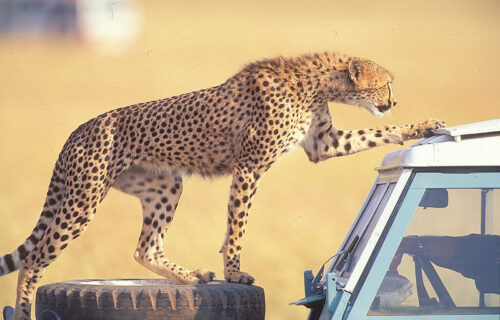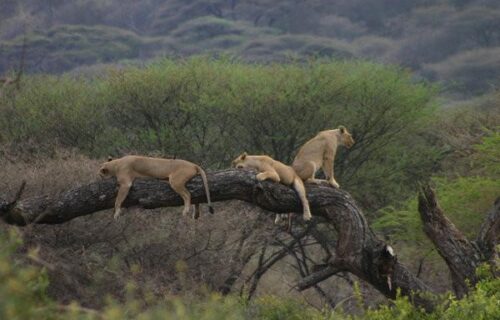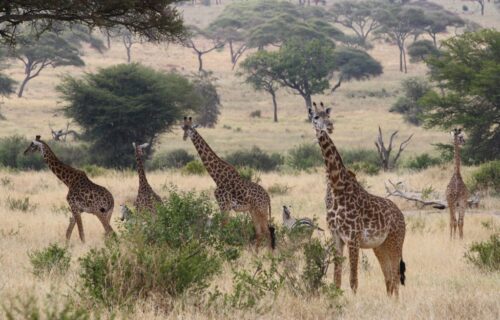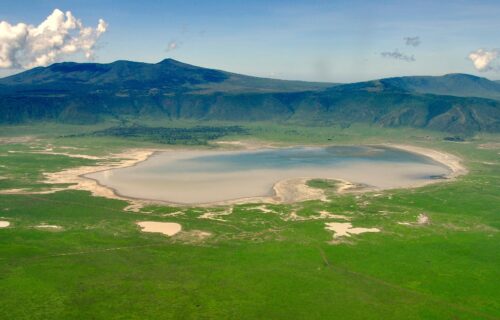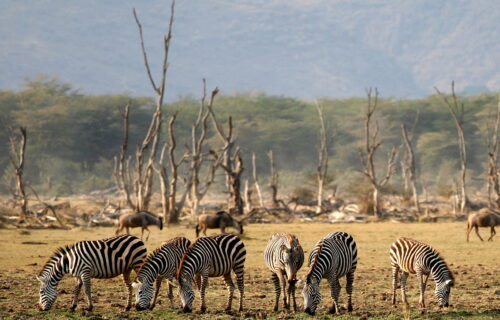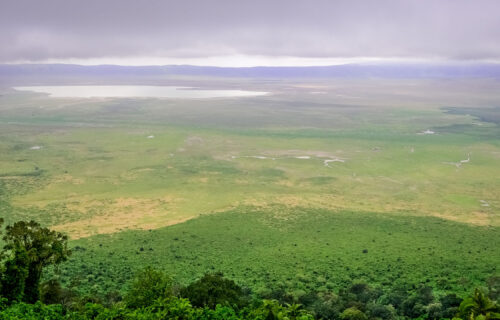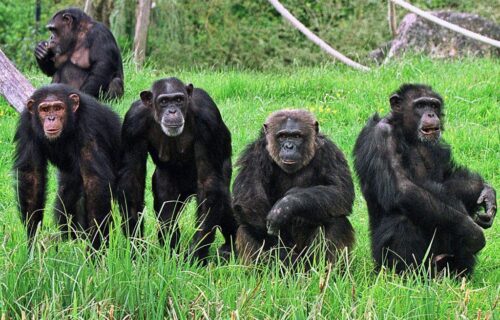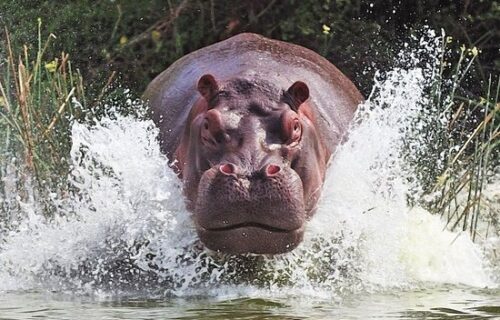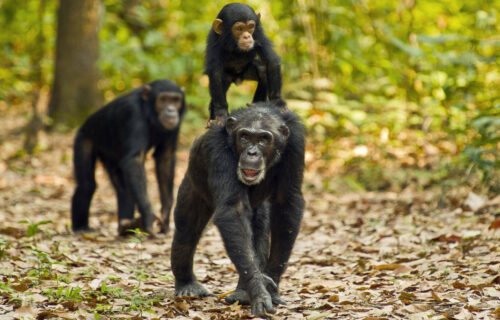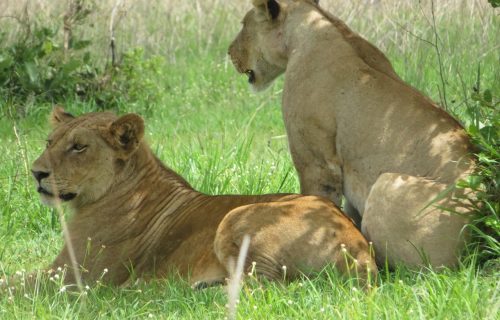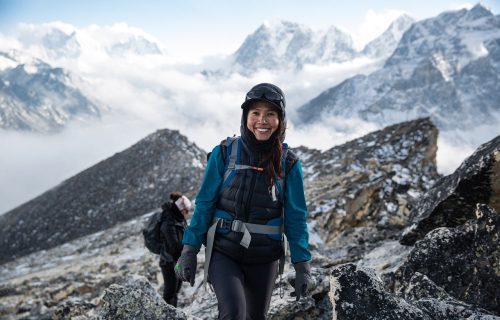Ngorongoro Conservation Area
The Ngorongoro Conservation Area (NCA) is a protected area located in northern Tanzania, and it is one of the most unique and valuable conservation areas in the world. The NCA is a UNESCO World Heritage Site and is home to an incredible array of wildlife, including the Big Five (lion, leopard, elephant, buffalo, and rhinoceros). The area is also home to several important archaeological sites, including the Olduvai Gorge, which is famous for its fossil discoveries.
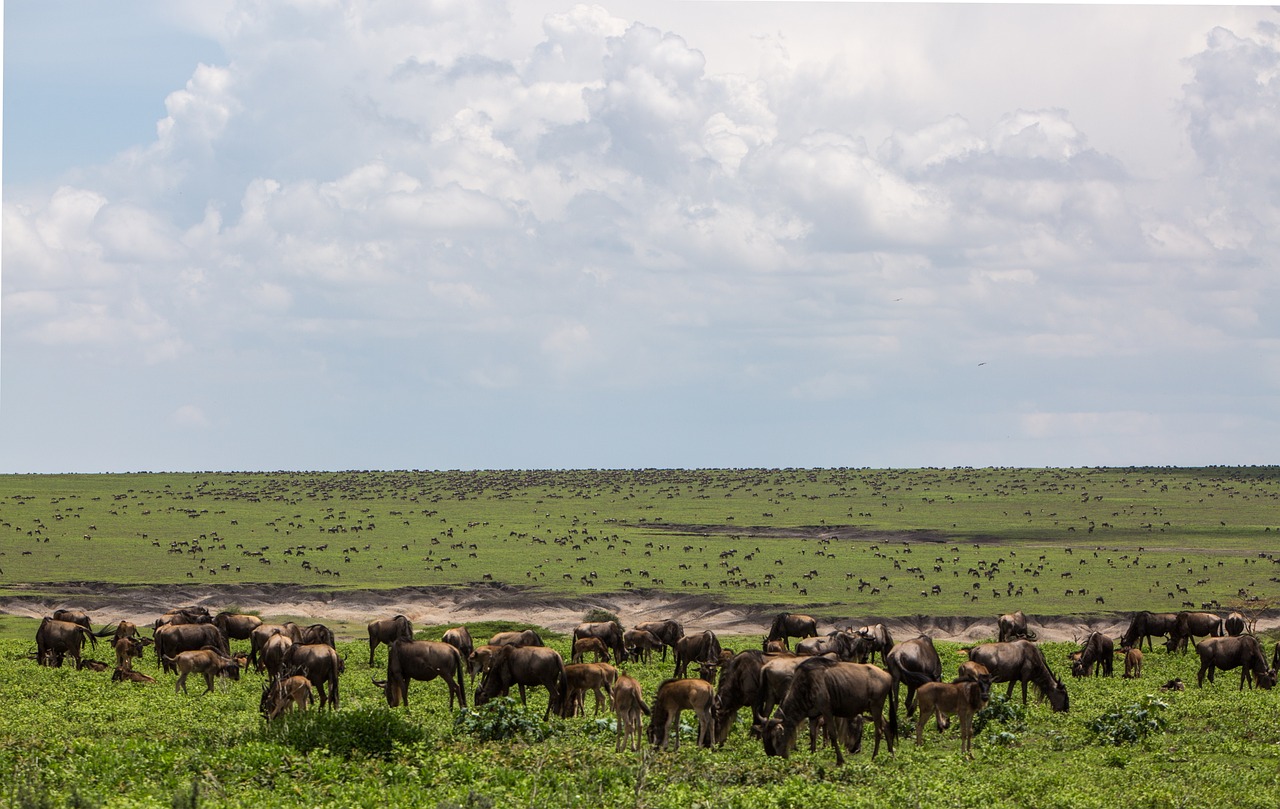 The NCA is a vast and diverse area, covering over 8,288 square kilometers of land. It is located in the northern part of Tanzania, near the Kenyan border, and is situated in the heart of the Rift Valley. The area is characterized by a unique combination of volcanic landscapes, mountains, and plains, which provide a habitat for a wide range of wildlife.
The NCA is a vast and diverse area, covering over 8,288 square kilometers of land. It is located in the northern part of Tanzania, near the Kenyan border, and is situated in the heart of the Rift Valley. The area is characterized by a unique combination of volcanic landscapes, mountains, and plains, which provide a habitat for a wide range of wildlife.
Ngorongoro Conservation Area Brief History
The NCA has a rich and diverse history, with evidence of human habitation dating back over 3 million years. The area was first inhabited by the Hadzabe people, who are believed to be one of the oldest tribes in Africa. The Hadzabe are a small tribe of hunter-gatherers who have lived in the area for thousands of years, and they are known for their unique culture and way of life.
In the 19th century, the area was colonized by the Germans, who established several settlements and farms. The Germans also established the first conservation efforts in the area, and they declared the Ngorongoro Crater a game reserve in 1928.
After World War I, the area was mandated to the British, who established the NCA as a conservation area in 1959. The British also established the first national park in Tanzania, Serengeti National Park, which is located adjacent to the NCA.
 Ngorongoro Conservation Area Conservation Significance
Ngorongoro Conservation Area Conservation Significance
The NCA is of great conservation significance, with a wide range of flora and fauna that are found nowhere else in the world. The area is home to over 25,000 large animals, including:
– The Big Five (lion, leopard, elephant, buffalo, and rhinoceros)
– Wildebeest- Zebras- Hyenas- Cheetahs- Giraffes
The NCA is also home to several important archaeological sites, including the Olduvai Gorge, which is famous for its fossil discoveries. The Olduvai Gorge is a deep gorge that is located in the eastern part of the NCA, and it is known for its rich deposits of fossils.
The NCA is also home to several unique and endangered species, including the black rhinoceros and the African wild dog. The area is also an important habitat for several migratory species, including the wildebeest and the zebra.
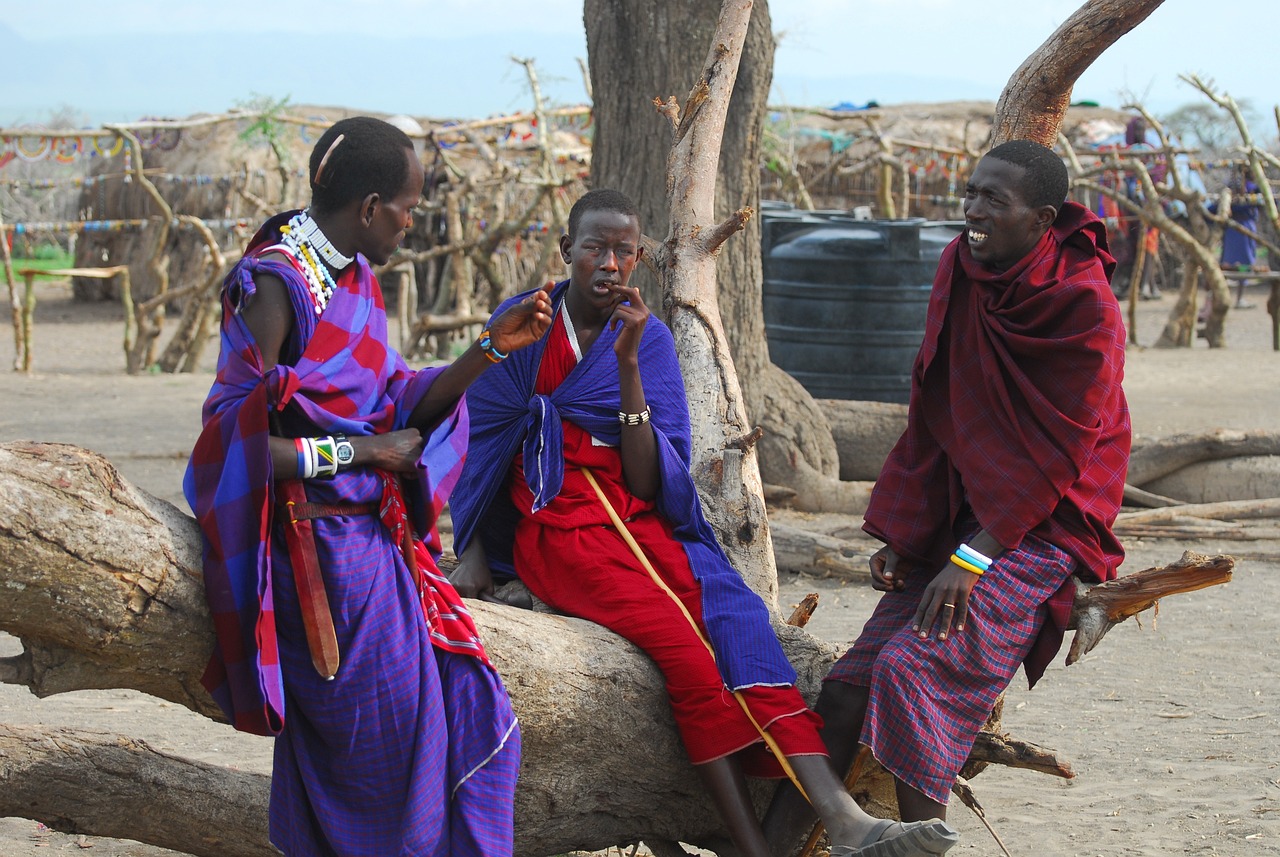
Diverse Landscape
The NCA is characterized by a diverse landscape, which includes:
– The Ngorongoro Crater: a large volcanic caldera that is home to a wide range of wildlife
– The Empakai Crater: a smaller volcanic caldera that is home to several species of birds and mammals
– The Olduvai Gorge: a deep gorge that is famous for its fossil discoveries
– The Serengeti Plains: a vast grassland that is home to many species of mammals and birds
The NCA is also home to several unique and diverse ecosystems, including:
– The crater floor: a unique ecosystem that is home to several species of plants and animals
– The crater rim: a unique ecosystem that is home to several species of plants and animals
– The highlands: a unique ecosystem that is home to several species of plants and animals
– The lowlands: a unique ecosystem that is home to several species of plants and animals
Geography and Climate
The Ngorongoro Conservation Area (NCA) is located in northern Tanzania, near the Kenyan border. The area is characterized by a subtropical climate, with two rainy seasons and two dry seasons. The temperature in the area varies depending on the time of year, but it is generally mild, with average temperatures ranging from 15°C to 25°C.
The NCA is situated in the heart of the Rift Valley, and its geography is dominated by the Ngorongoro Crater, which is the largest intact caldera in the world. The crater is approximately 260 square kilometers in size and is home to a wide range of wildlife. The area is also home to several other unique geological features, including the Empakai Crater and the Olmoti Crater.
 Tourism and Recreation
Tourism and Recreation
The NCA is a popular tourist destination, and it offers many opportunities for recreation and adventure. Some of the most popular activities in the area include:
– Game drives: visitors can take guided game drives through the NCA to see the area’s incredible wildlife, including the Big Five (lion, leopard, elephant, buffalo, and rhinoceros)
– Hiking: visitors can hike through the NCA’s beautiful landscapes, including the Ngorongoro Crater and the Empakai Crater
– Birdwatching: the NCA is home to many species of birds, and visitors can take guided birdwatching tours to see them
– Cultural tourism: visitors can learn about the local Maasai culture and visit traditional Maasai villages
– Photography: the NCA offers many opportunities for photography, with its stunning landscapes and incredible wildlife
Threats and Challenges
The NCA faces several threats and challenges, including:
– Over-tourism: the area is becoming increasingly popular with tourists, which can put pressure on the local environment and wildlife
– Poaching: the area is home to many valuable species, including rhinoceros and elephant, which are targeted by poachers
– Human-wildlife conflict: the area is home to many local communities, which can come into conflict with the area’s wildlife
– Climate change: the area is vulnerable to climate change, which can affect the local environment and wildlife
– Habitat loss: the area is facing habitat loss due to human activities such as agriculture and urbanization
Best Time to Visit Ngorongoro Conservation Area
The best time to visit the NCA depends on what you want to do. The dry season (June to October) is the best time for game drives and wildlife viewing, while the wet season (November to May) is the best time for hiking and birdwatching.
Why Visit Ngorongoro Conservation Area?
The NCA is a unique and valuable conservation area that offers many opportunities for recreation and adventure. Visitors can see an incredible array of wildlife, including the Big Five, and experience the local Maasai culture. The area is also home to several important archaeological sites, including the Olduvai Gorge.
 Getting To Ngorongoro Conservation Area
Getting To Ngorongoro Conservation Area
The NCA is located in northern Tanzania, near the Kenyan border. The area is accessible by car or plane, and there are several airports and roads that serve the area. The closest airport is the Kilimanjaro International Airport, which is located approximately 300 kilometers from the NCA.
Accommodation in Ngorongoro Conservation Area
There are several options for accommodation in the NCA, including:
– Lodges: there are several lodges in the area, ranging from budget-friendly options to luxury resorts
– Camps: there are several camps in the area, ranging from budget-friendly options to luxury camps
– Tented camps: there are several tented camps in the area, which offer a unique and adventurous way to experience the NCA
– Hotels: there are several hotels in the area, which offer a range of accommodation options.
It’s worth noting that the NCA has a range of accommodation options to suit different budgets and preferences. However, it’s recommended to book in advance, especially during the peak season.
Tanzania Safari Packages | Ngorongoro Conservation Area
9 Days Classic Tanzania Safari – Embark on the breathtaking landscapes of Tanzania, from the savanna plains that teem with zebras and wildebeests to the deep caldera of Ngorongoro Crater, where an incredible. Read More
10 Days Tanzania Wildlife Safari covers Katavi National park that’s located in Katavi region. The park is ranked 3rd largest national park in Tanzania comprising of Katuma River. Read More[/vc_column_text][/vc_column][/vc_row]
[/vc_column_text]
12 Days Kenya & Tanzania Safari traverses the major parks of Kenya and Tanzania, the Wildebeest Migration in Serengeti and Maasai Mara. Explore the Ngorongoro Crater, Lake Manyara Park, and Tarangire National Park. Read More
10 Days Tanzania Wildlife Tour meets your travel expectations for wildlife and the entire wilderness in the thick trees in the park. A visit to Lake Manyara is worth your eyesight for tree-climbing lions, baboons. Read More
9 Days Classic Tanzania Safari – Embark on the breathtaking landscapes of Tanzania, from the savanna plains that teem with zebras and wildebeests to the deep caldera of Ngorongoro Crater, where an incredible. Read More
7 Days Tanzania wildlife safari, you will get to see some of Africa’s most amazing creatures including the African Elephant, the Africa big cat family, the black rhino. Read More
Start on an unforgettable adventure in Tanzania for 5 Days Tanzania Wildlife Safari searching for the African “big five” and gaining insights into the culture of the indigenous Maasai. Read More
3 Days Ngorongoro Crater Safari visit in Tanzania brings you the best experience of the conservation area from its history to the present. Read More
8 Days Tanzania Chimpanzee Trekking Safari – Embark on your safari to the remote shorelines of Lake Tanganyika to explore the forests of Mahale Mountains National Park. Read More
10 Days Tanzania Wildlife Safari covers Katavi National park that’s located in Katavi region. The park is ranked 3rd largest national park in Tanzania comprising of Katuma River. Read More
4 Days Gombe Chimpanzee Trekking Safari – Gombe Stream National Park is located in the western region of Kigoma, Tanzania. Read More
6 Days Kilimanjaro Climbing Safaris – Umbwe Route. Because the ascent profile does not allow climbers much time to acclimatise to the altitude, Umbwe is generally avoided. It has an extremely poor success rate. Read More
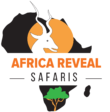
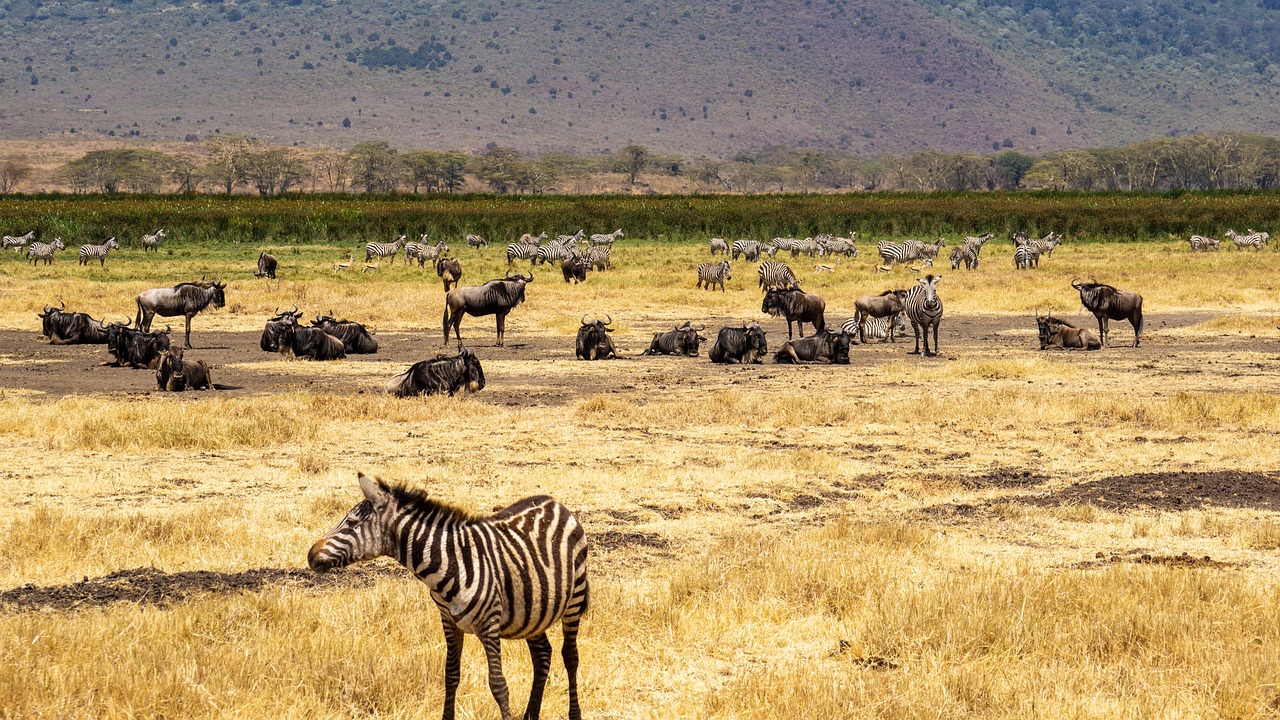 Ngorongoro Conservation Area Conservation Significance
Ngorongoro Conservation Area Conservation Significance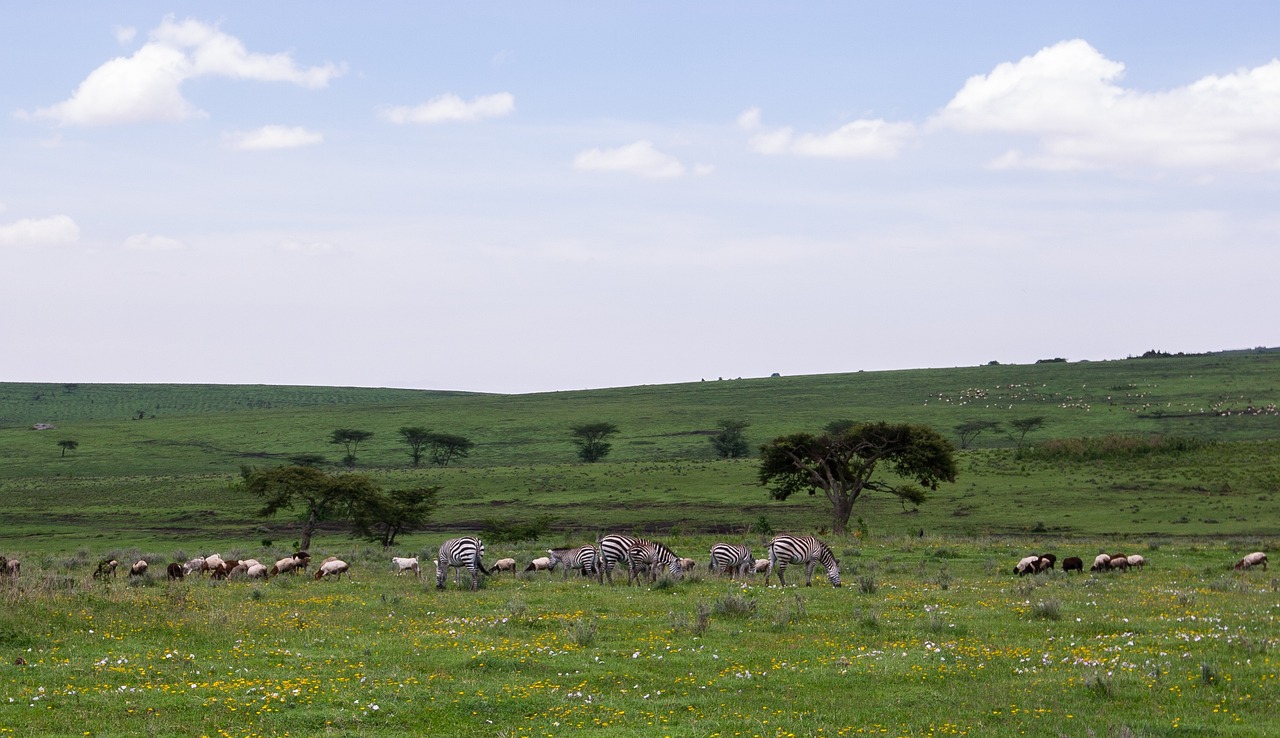 Tourism and Recreation
Tourism and Recreation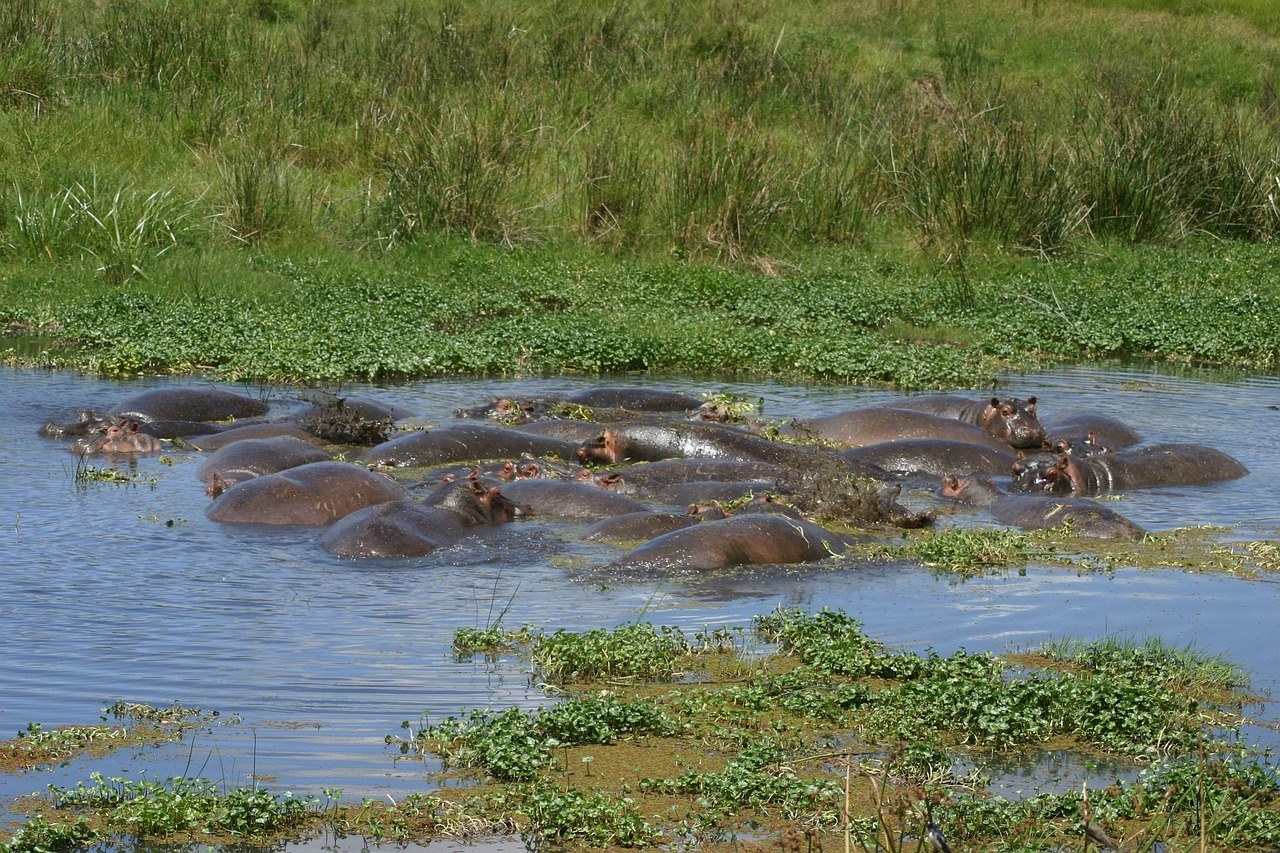 Getting To Ngorongoro Conservation Area
Getting To Ngorongoro Conservation Area